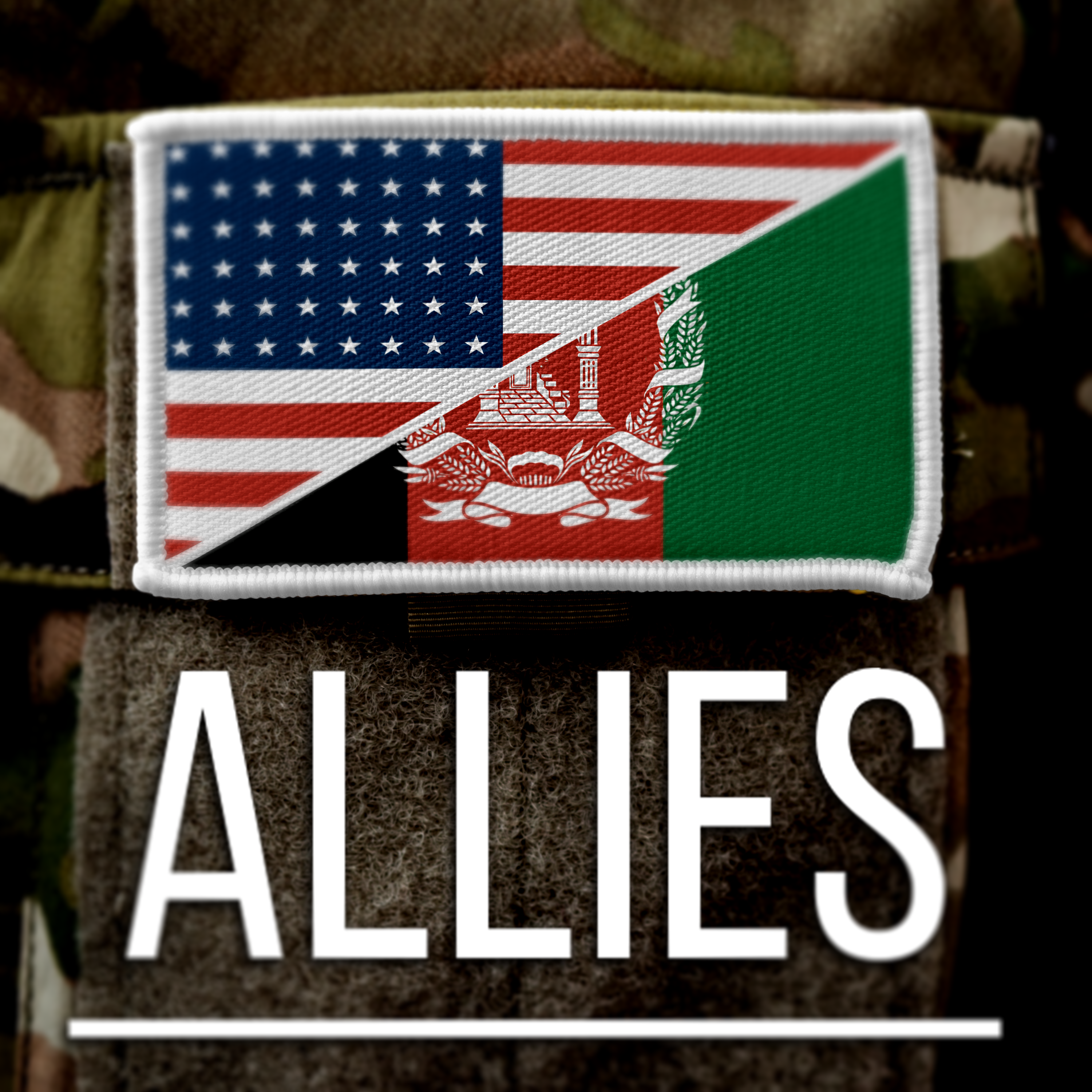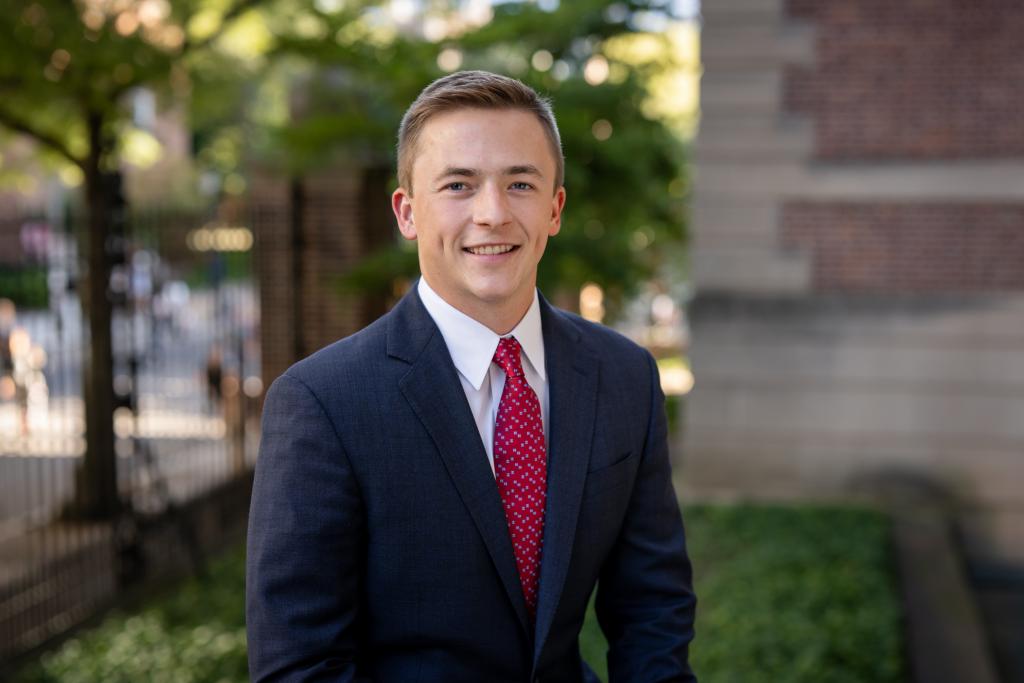America’s Allies and the War in Afghanistan
The story of the Special Immigrant Visa program for Afghan translators reflects the U.S. government’s ambivalence toward its allies in Afghanistan.

Published by The Lawfare Institute
in Cooperation With

One year ago today, the Taliban entered Kabul as the Afghan government collapsed. The Taliban’s entrance into Afghanistan’s capital city marked the failure of the United States’ 20-year war and attempt to build a sustainable Afghan government. The Taliban’s military victory also touched off two weeks of chaos at Hamid Karzai International Airport as Afghans who had worked to support the U.S tried to escape. The final images of the withdrawal included Afghans clinging to U.S. military aircraft and handing their children over barbed wire fences to U.S. soldiers.
Earlier this summer, Lawfare and Goat Rodeo released Allies, a podcast series that traces the United States’ efforts to protect Afghan interpreters, translators, and other partners through the Special Immigrant Visa (SIV) program. The seven-episode series covers the invasion of Afghanistan, the origin of the SIV program, the withdrawal from Afghanistan, and ongoing evacuation efforts and resettlement issues. In honor of the one-year anniversary, Lawfare is rereleasing Allies in its entirety on the Lawfare Presents podcast feed.
A podcast series that dives into a government visa program might appear to be a strange vehicle through which to explore the history of the United States’ war in Afghanistan. But, as we found in researching the series, America’s treatment of its allies reflects a broader ambivalence toward the war. The day-to-day operations and the local populations’ perception of the U.S. depended pervasively on interpreters and translators. This was a war in which language, and those who had access to it, shaped the fighting deeply. The SIV program’s creation, like the war’s inception, was punctuated by a flash of bipartisan support. Its execution, however, often became the subject of partisan infighting in Congress and bureaucratic paralysis in the executive branch. And the SIV program’s failure, like the withdrawal from Afghanistan, ultimately victimized the Afghans who trusted the U.S. the most.
Episode 1: “Faithful and Valuable Service” Transcript
Episode 2: “A National of Iraq” Transcript
Episode 3: “Ongoing Threat” Transcript
Episode 4: “Numerical Limitations” Transcript
Episode 5: “Extreme Vetting” Transcript
Episode 6: “Allies Refuge” Transcript
Episode 7: “Adjustment” Transcript
The story begins just before 9/11, when the U.S. government had little regional, let alone linguistic, expertise for Afghanistan. As Kori Schake, who served on the Bush administration’s National Security Council (NSC) from 2003 to 2005, told us, “I bet we had less than 20 language experts within the entire U.S. foreign policy bureaucracy.” When the U.S. invaded Afghanistan, that knowledge gap needed to be filled rapidly, so the U.S. began hiring local partners through military contractors. As we detail in Episode 1, they became essential partners, and it was nearly impossible for any U.S. platoon, provincial reconstruction team, or diplomat to operate without interpreters and translators. They were the United States’ eyes and ears.
The interpreters themselves decided to work for the U.S. for different reasons. One Afghan interpreter called “Fred” told us that by working for the U.S., he was actually working for “two governments.” His logic was that, by working for the U.S. government, he was helping the Afghan government build a better future for Afghanistan. When these interpreters fought in the field, they served as crucial advisers to U.S. personnel. Their service ranged from translating direct conversations to intercepting and interpreting Taliban communications over the radio to collecting intelligence from local sources to a wide array of other critical tasks.
Another factor in the value of their service was its duration; some interpreters worked for the U.S. for a long time. In Fred’s case, for example, he worked for the U.S. for more than 13 years. The translators became some of the best sources of institutional knowledge in Afghanistan because U.S. service people deployed to Afghanistan for only a few months or a year at a time. Just as a unit became familiar with an area, in the words of Gen. John Allen, “a new unit coming in wouldn’t have that kind of situational awareness,” so in the beginning of the rotation “there were early casualties among the Afghans and, civilian casualties …. that came from our forces not really knowing the operational environment.” The translators and interpreters often helped smooth transitions for incoming units.
The Taliban recognized that these interpreters and translators were essential to the U.S. mission. During combat, Taliban fighters shouted over the radio “shoot the eyes first.” And aside from direct combat, the interpreters and their families came under threat as the insurgency slowly gained momentum in the late 2000s. The Taliban left threatening letters at the homes of interpreters and their family members. One U.S. soldier recalled the Taliban sending body parts of killed translators to bases. At the same time, the U.S. war in Iraq also faced an insurgency that targeted anyone who worked with the Americans. Politicians, diplomats, veterans, and journalists took note of the trend.
Up to that point in the war, the Bush administration’s narrative was that a refugee crisis in Iraq didn’t exist because Iraqis had been “liberated.” And with Republicans in control of the Senate until 2006, little attention was paid to the crisis. That changed when the Democrats took control of the Senate after the 2006 midterm elections, and Sen. Ted Kennedy (D-Mass.) chaired the Judiciary Committee, which has jurisdiction over immigration. As a solution to the growing problem, Kennedy’s office looked to a preexisting visa program known as the Special Immigrant Visa. The SIV had previously been used within the State Department as a reward to local embassy employees who had demonstrated exceptional service.
In January 2007, the Senate Judiciary Committee held a hearing titled “The Plight of Iraqi Refugees.” The hearing, initiated by then-Chairman Kennedy, came amidst the peak of sectarian violence in Iraq. The witnesses included a 27-year-old Iraqi interpreter who worked for the U.S. and went by the alias “Sami” in order to protect his identity. Sami appeared before the committee anonymously, behind a screen, and the committee asked the press not to photograph or film Sami as he entered and exited the room. The dramatic moment opened with Kennedy, who, referencing the growing number of refugees, noting, “Like other aspects of the war, we bear a heavy responsibility for their plight.” He continued by noting that the SIV program for Iraqi interpreters and translators had a six-year waiting list and said, “[W]e have a special obligation to keep faith with the Iraqis who have bravely worked for us … by providing them with safe refuge in the US.”
In addition to congressional attention, there were people like Kirk Johnson, a former USAID employee in Iraq, who began collecting names of Iraqis who worked for the U.S. and faced threats against their lives as a result of their service. George Packer, writing for the New Yorker, wrote an article about the threat to interpreters and translators titled, “Betrayed: The Iraqis Who Trusted America the Most,” which had such an impact it made U.S. infantry officers in Iraq reconsider their efforts to protect their interpreters and translators. In the words of Col. Steve Miska, “I just realized after reading George Packer’s article in the New Yorker, that I just couldn’t look myself in the mirror unless we tried to help. …. [T]hese guys were on patrol with us every day. … So that’s when we started trying to figure out the SIV.”
The U.S. ambassador to Iraq, Ryan Crocker, saw two of his embassy employees kidnapped and killed as a result of their work, and vowed to promote the SIV program. All of those Americans who worked in Iraq—Miska, Crocker, Johnson, and others—began making noise about the ongoing crisis. Johnson started the List Project, Crocker wrote urgent memos to the administration, and Miska eventually got dozens of his interpreters SIVs.
In 2006, the SIV program was limited to 50 spots per year for Iraq and Afghanistan—an incredibly small number considering the footprint of U.S. troops in those countries. With Kennedy’s help, Congress increased that number to 500. And with bipartisan support, the Refugee Crisis in Iraq Act passed in early 2008 and increased the number of SIVs to 5,000 per year. Johnson, who had met with Kennedy and lobbied for the legislation, was thrilled, “I just had my ‘Mr. Smith Goes to Washington’ thing where in the span of six months or eight months, I spoke out about a problem, and then we just had some meetings and we passed a law and now we fixed it.” Two years later, the Afghan Allies Protection Act of 2009 increased the Afghan SIV allocation to 1,500 per year.
But the system wasn’t fixed.
After the passage of that legislation, it may have appeared as if the system was working as intended. Government employees, the press, the public, and members of Congress had been made aware of an issue, and then Congress passed a law to solve the problem. The only remaining step was for the executive branch to fulfill the promise by processing applications and giving out visas.
Many who had advocated for the expanded SIV program were hopeful that the Obama administration would implement the program as intended. But as the administration withdrew from Iraq in 2009, Kirk Johnson noticed that it wasn’t implementing the program with enough urgency and many Iraqis were coming under threat. As Johnson recounts in his book “To Be a Friend Is Fatal,” during the first term of the Obama administration, “the Special Immigrant Visa created by the Kennedy legislation to resettle 5,000 interpreters each year was in shambles, granting visas to only about 150 Iraqis each month.” Johnson eventually advocated for a massive airlift of Iraqi allies, known as the “Guam Option.” Johnson’s account is an eerie foreshadowing of what was to come in Afghanistan, where many advocates would later advocate for the “Guam Option” for Afghan allies in 2021.
The Afghan SIV program has been plagued by executive branch paralysis. It proved to be nearly impossible for the administration to fully implement the program. According to the Congressional Research Service, the State Department issued just under 850 SIVs for Afghans from 2010 to 2013, about 15 percent of the visas that Congress had allocated.
Officials in the Obama administration argued that allocating the maximum number of SIVs would cause a “brain drain” in Afghanistan. In 2010, the U.S. ambassador to Afghanistan, Karl Eikenberry, wrote in a cable that the SIV program “could drain this country of our very best civilian and military partners—our Afghan employees.” Eikenberry’s cable reveals a contradictory fact about the SIV program: Its mere existence was evidence of the failure of the United States’ efforts in Iraq and Afghanistan. Why would the U.S. need a program to protect its own local employees if it was succeeding in stabilizing a country? If the U.S. wanted to stabilize the country, wouldn’t it need local partners with institutional knowledge? Eikenberry’s cable also came at the height of the surge in Afghanistan—another development in the broader war that revealed how mismatched the SIV program was for the size of the problem it was attempting to confront.
Congress passed the original Afghan Allies Protection Act of 2009 a few months before the Obama administration announced “the surge” of troops and resources into Afghanistan. That act allocated just 1,500 visas per year for Afghan SIVs, a number commensurate with the approximately 25,000 U.S. soldiers in Afghanistan. (For comparison, the Refugee Crisis in Iraq Act of 2007 allocated 5,000 spots per year, with a U.S. troop level of approximately 150,000.) Although U.S. troop levels rose to nearly 100,000 by 2011 and more translators would be required, the number of visa spots remained the same.
Additionally, the interagency security screening process often resulted in the rejection of deserving SIV applicants. For example, one former State Department official who screened SIVs and refugees told us that analysts often deal with ambiguous information like if an applicant “once made a phone call to such and such a person who … turns out at a later date was involved in some crime or terror incident.” In other cases, an applicant may have had to pay a ransom to a terror group for a kidnapped family member, which might constitute “material support” to terrorism. The security screening and application process was not tailored for applicants in a country like Afghanistan where an insurgency had its reach in every part of society.
The Afghan Allies Protection Act of 2009 had allocated visas only through fiscal year 2013. With that expiration date approaching, lobbyists like Katie Reisner, then-policy director at the International Refugee Assistance Project (IRAP), and Matt Zeller, a veteran and SIV advocate, fought to extend the program. In their successful effort to do so, they added several key amendments, including allowing applicants to have legal representation; establishing an appeals process for rejected applications; requiring the State Department to establish an Afghan SIV coordinator; and requiring all applications to be processed in a nine-month time frame. Those amendments, combined with the Obama administration’s dedication to the program during its second term, allowed the SIV program to begin to work as intended. By the end of 2016, the State Department was administering nearly 3,500 SIVs per year.
But alongside those amendments, legislative mechanisms revealed another weakness in the Afghan SIV program. After 2014, the SIV program’s allotment of visas had to be renewed on a yearly basis. The logic behind a yearly allocation process seems pretty straightforward: The situation in Afghanistan might change, so why extend the SIV program past a date where the U.S. might not even be in Afghanistan? Although that might sound benign, the effects of that yearly allocation process were tragic. They appeared in two forms.
First, opponents of the program in Congress would have the opportunity to voice their opposition each time the program was up for renewal. After 2014, Congress renewed the SIV program through the National Defense Authorization Act or some other must-past bill. The negotiations would sometimes result in opponents constricting eligibility for the SIV program. For example, in 2015, the work requirement for those eligible for an SIV applicant was increased from one to two years. Would the Taliban not attempt to kill an interpreter or translator because they worked for the U.S. for only one year, not two? But the supporters of the program had to agree to the change because a failure to reach an agreement would terminate the program. The shifting application requirements were the results of a divided legislature, which then placed the burden on the applicants themselves. For instance, even though the legislation noted that the new work requirement applied to those submitting applications after Sept. 30, it was unclear whether the new requirements would apply to resubmitted applications.
The second effect of a yearly allocation process impacted resourcing at the State Department. The department’s inspector general report on the SIV program noted that the “uncertainty of visa availability” affected the implementation of the program. The report “determined that the Department is unable to conduct long-term planning because of the uncertainty of visa availability and the temporary nature of the Afghan SIV program.” That absence of long-term planning resulted in the government not investing in new technology or personnel for SIV processing. For example, the Defense Department’s database for keeping track of military contractors, known as the Synchronized Predeployment and Operational Tracker (SPOT), might have been used “as a potential method for verifying employment” for an SIV applicant. But the government did not use or update that database because “it was not cost effective to establish a new system of record or extend the functionality of SPOT … likely because the Afghan SIV program was expected to expire in FY 2014.” Additionally, from 2016 to 2020, “staffing levels to process Afghan SIVs ha[d] generally remained constant” even as the backlog of applicants grew.
The Trump administration’s harsh immigration policies exacerbated both problems. Even in 2016, as then-candidate Trump advocated for a total ban of Muslims entering the U.S., Sens. Chuck Grassley (R-Iowa) and Jeff Sessions’s (R-Ala.) objection to the SIV program further restricted eligibility for the program. As the Huffington Post reported at the time, Grassely and Sessions said publicly that the program was too expensive but allegedly said in private that they didn’t want more immigrants in the country. To those Republican senators, it simply didn’t matter that the SIV program was created for people who served alongside U.S. soldiers (and had already undergone several background checks in order to obtain employment with the U.S.). One spokesman for Sen. Jeanne Shaheen (D-N.H.), a staunch supporter of the program, said that the Republicans’ move “reeks of Donald Trump.” Sen. John McCain (R-Ariz.), another supporter of the program, accused some Republicans of “signing the death warrants” of those waiting for SIVs.
In September 2017, President Trump issued an executive order calling for “extreme vetting” of refugees. As Ambassador Mark Storella, the former deputy assistant secretary of state for the Bureau of Population, Refugees, and Migration, told us, the security vetting of SIV applications was already “the most rigorous screen[ing] process for anyone entering the United States of any type.” The Trump administration’s new security procedures were more labor intensive and harder to implement. For instance, the administration added a new requirement of screening applicants’ social media accounts. Storella thought that the State Department could work with these requirements, but, just as the new security policies added more work to the screening process, they also pulled resources from the vetting agencies. Storella remembered that, at the time, the FBI, which has an essential role in the process, had “only one person left, assigned to all of the vetting for all refugees and all special immigrant visa applications.”
Inside the Trump White House, some officials tried to fight for the program. Olivia Troye, the Department of Homeland Security adviser to Vice President Mike Pence, recalled the vice president circling a story in the Washington Post about delays in the SIV program and asking her to look into it. She followed up and was told that the applicants were undergoing “security checks.” Troye and other officials raised these issues at White House meetings, but she remembered that Trump’s senior immigration adviser, Stephen Miller, would say things like, in her words, “What is it that you people want? You want a bunch of Iraqi and Afghan communities around the country?” According to Troye, Trump advisers aligned with Miller’s views began classifying meetings and agendas in order to push out those who they perceived to be pro-SIV advisers.
The numbers of SIVs issued over Trump’s term underscore the devastation to the SIV program. In 2017, before a lot of these procedures were in place, over 4,000 Afghan SIVs were issued. But each of the next three years would see not even half that number. Iraqi refugees fared even worse. NBC News reported that, in 2018, only two former Iraqi interpreters received visas. Trump was closing the exits for America’s allies in Afghanistan just as he sought to withdraw U.S. forces. His deal with the Taliban effectively sealed their fate and locked them in a country where the Taliban continued to hunt them.
The Biden administration chose to abide by Trump’s deal but extended the withdrawal deadline from May 2021 to September 2021. SIV advocates were hopeful that the new administration would prioritize SIVs. As George Packer recounts in his article “The Betrayal,” several national security officials in the Biden administration had worked at SIV advocacy groups and nonprofits: “The ties between these organizations and the new administration were nearly incestous.” Packer lists Secretary of State Antony Blinken, who had been on the board of Human Rights First; National Security Council official Jon Finer, who helped found IRAP in 2008, and Samantha Power, the new head of USAID, who sat on IRAP’s board.
SIV advocates began once again promoting the “Guam Option” for Afghan allies as they did for Iraqi allies a decade before. For Congress’s part, there was broad bipartisan support for Afghan SIVs, and the passage of amendments raised the visa allotment and tried to expedite the process over the summer. But it was too little too late. Many felt that the administration simply wasn’t moving quickly enough. The Biden administration announced “Operation Allies Refuge” in July 2021. In a speech on the status of the withdrawal, Biden said: “[W]e’ve already approved 2,500 Special Immigrant Visas to come to the United States. Up to now, fewer than half have exercised their right to do that. … [T]he other half believe they want to stay.” As Packer writes, “The president, echoed by his officials, was trying to blame Afghans for their own entrapment.”
During this time, the U.S. military withdrawal proceeded ahead of schedule. Jonathan Schroden, an Afghan military analyst at the Center for Naval Analyses, told us that, because Biden wanted to minimize U.S. casualties, the military had no choice but to withdraw as quickly as possible because the Taliban could renege on the deal and attack at any moment. In Schroden’s words, the military “had to treat the withdrawal as a withdrawal under fire, or at least potentially under fire. That is one of the most dangerous military operations that one could try to undertake.”
As the Taliban advanced rapidly, many American veterans of the war were in constant communication with their Afghan counterparts and friends. One U.S. veteran who had trained the Afghan National Army’s Female Tactical Platoon said that she began looking into the SIV for the Afghan women she had trained, but they didn’t qualify because they didn’t work directly for the U.S. This underscores an important shift in the withdrawal that ultimately culminated at the Kabul airport. Since the establishment of the SIV program for Afghans, the translators, interpreters, and other partners who worked directly for the U.S. had been undergoing a slow-motion evacuation for over a decade. But now, as Afghanistan fell under Taliban control, the SIV recipients and applicants would be joined by members of Afghan society who didn’t work directly for the U.S., but aligned themselves with the ideals that the U.S. promoted throughout the war. These ideals included Afghan women’s inclusion in public life and a free and open press. And they faced many of the same bureaucratic catch-22s that SIV applicants had. Did they have the right paperwork? Do they have adequate proof that their life is under threat from the Taliban?
So on Aug. 15, when the Taliban entered Kabul, thousands of Afghans who had built their lives around the promises of America’s mission in Afghanistan descended on the Kabul airport. In the U.S., active-duty military, veterans, politicians, and other private citizens stood up operations like Operation Eagle, Digital Dunkirk, and Task Force Pineapple to evacuate Afghans. The Post has reported that the informal efforts of private citizens placed some burden on the military. For those veterans involved in the effort, they believed they didn’t have any other choice but to try and help. We asked one veteran what he made of the government’s claim that informal efforts hurt the evacuation. He said, “Where was the number that I was supposed to call? When an Afghan says, ‘I need help getting out.’ What was the number or the email or the person we are supposed to put them in touch with? ‘Cause that did not exist.’”
Some Afghans made it inside the airport with no outside help. Hakimi, a 22-year-old Afghan activist, told us that he made it into the airport on Aug. 26 a few hours before an Islamic State suicide bomber killed 13 U.S. service members and more than 170 Afghans. He remembers seeing the bodies of U.S. service members, and thinking, “Why they died? They died because of me, because of my family, because of Afghan people.”
In total, the U.S. military and State Department employees processed and evacuated nearly 78,000 Afghans in a stunning feat of logistics. But since August 2021, the legal status of the vast majority has remained uncertain. In March, the Biden administration extended their temporary protected status for another 18 months. Groups like the #AfghanEvac coalition are lobbying for the Afghan Adjustment Act, which would provide a path to permanent residency in the U.S. for those Afghans who don’t qualify for the SIV program. This May, there was hope that the act would be attached to the Ukraine supplemental aid bill. But, as has happened so often in the history of the SIV program, opposition to the bill from Republican senators like Joni Ernst (R-Iowa), Rob Portman (R-Ohio), and Grassley blocked its inclusion. The senators’ objections once again rest on vague “security” and screening process concerns that simply do not match with reality. A 2019 study by the CATO Institute found that “the chance of an American being murdered in a terrorist attack by a refugee is about 1 in 3.86 billion per year” (emphasis in the original). As Ambassador Storella told us, “Since the 1970s, not a single American citizen has been killed in a terror attack by someone who came into the United States as a refugee, not a single one.” A group of bipartisan senators introduced the Afghan Adjustment Act last week, but it is still unclear if the bill will pass this year.
If there are any real national security concerns with the SIV program, they concern the downstream effects of America’s poor treatment of its allies. When we asked Kori Schake about the end of America’s involvement in Afghanistan, she said, “[N]ot only is that a disgrace of our honor, but it’s going to make it harder to find allies, interpreters, translators, civil society, activists, journalists, political figures, willing to run risks alongside us for what we’re trying to create in the world. It will make everything we do going forward harder and costlier because we have demonstrated we’re unreliable.” Elliot Ackerman, a former Marine Corps special forces adviser to the Afghan National Army, argued that the botched exit is already impacting global security: “Are we actually going to argue that there is no correlation between NATO losing this war decisively to about 50,000 Talibs and this catastrophic evacuation and how weak it made NATO look … to what Russia has done in Europe in February a few months later?”
And with national media attention focused on Ukraine, Americans have turned their attention away from Afghanistan. But the trauma from the withdrawal lives with everyone who was involved in the evacuation effort. Many veterans have spoken out about the moral injury of the withdrawal. And, with an ongoing humanitarian crisis unfolding in Afghanistan, many Afghans who were evacuated last August fear that their country will be forgotten about. When we spoke with Mahnaz, an Afghan woman who served in the Afghan National Army’s Female Tactical Platoon, she had one request for anyone listening: “Don’t forget Afghanistan … they need somebody, they need help, people are hungry. The soldiers … the Taliban [are] hunting them. They are killing them. … Don’t forget about my country.”





